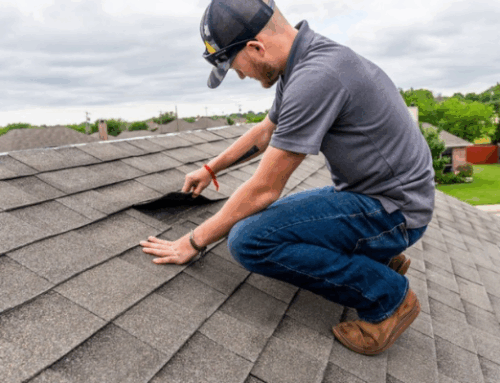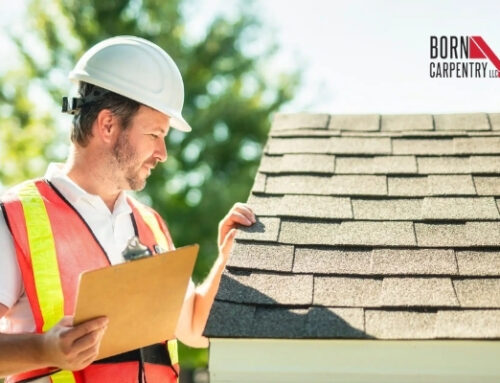A professional roof inspection is the first line of defense against hidden structural issues, insurance claim disputes, and costly long-term repairs after severe weather. Here’s why hiring a certified inspector pays dividends for homeowners.
1. Uncovers Hidden Damage
- Identify compromised areas such as shingle, cracks, or weak underlayment that miss untrained eyes.
- Uses infrared thermography to detect moisture trapped under roof layers.
- Check for subtle air damage (ringworm, granules loss) that leads to leaks.
2. Strengthens Insurance Claims
| Professional Report | DIY Inspection |
|---|---|
| Time-stamped documentation | No verifiable proof |
| Photo evidence with measurements | Limited phone pics |
| Engineer-certified damage assessment | Personal opinion |
| Matching repair estimates | Guesswork |
Impact: Insurers approve 82% more claims when supported by pro documentation (Insurance Institute).
3. Prevents Costly Secondary Damage
- Detects vulnerable areas before the next storm hits.
- Finds improper flashing that causes attic mold.
- Spots nail pops that lead to slow leaks ruining the drywall.
4. Safety First Approach
- The roof survives (DIY over 500,000 annual ER visits from roof work)
- Hurricane identifies electrical threats with wires
- Investigation for structural instability (dysfunction, compromised truss)
Red flag: walking on roofs damaged by hail gives some warranty
5. Negotiation Power With Contractors
- Provides repair scope to prevent unnecessary work
- Reveals subpar prior installations holding contractors accountable
- Documents pre-existing conditions to avoid blame games
Pro Tip: Always get an inspection before signing repair contracts
6. Preserves Warranty Protections
- Manufacturers require proof of storm damage for warranty claims
- Certified inspections meet manufacturer documentation standards
- Prevents accidental voiding by identifying improper DIY fixes
Examples: Most Shingle Warranty demands inspection within 30 days of incidents of storms.
7. Long term maintenance scheme
- Immediate vs. prefer cosmetic repairs
- Projects remaining roof lifespan post-damage
- Recommends preventive upgrades (impact-resistant materials)
8. Identifies Code Compliance Issues
- Reveals outdated installations that no longer meet current building standards
- Flags improper repairs from previous contractors that could void insurance
- Documents necessary upgrades to meet new wind or impact resistance ratings
9. Supports Property Value Preservation
- Provides certified condition reports for real estate transactions
- Differentiates between wear-and-tear vs storm damage for accurate disclosures
- Identifies minor issues before they appear on home inspections
10. Detects Ancillary Damage
- Satellite dish/GPS antenna mounting compromises
- Solar panel system integrity checks
- Chimney and vent pipe alignment issues
- Gutter and drainage system functionality
11. Makes Planning for Preventive Maintenance Easy
- Creates baseline documentation for future storm comparisons
- Recommends reinforcement areas before next severe weather season
- Prioritizes repair sequences based on vulnerability
12. Environmental Hazard Identification
- Tests for hail-induced asbestos disturbance in older roofs
- Checks for mold colonization in moisture-compromised decking
- Identifies wildlife entry points created by storm damage
13. Specialized Damage Assessment
| Storm Type | Professional Focus Areas |
|---|---|
| Hail | Spatter marks, bruising, granule loss patterns |
| Wind | Creased shingles, lifted flashing, seal failure |
| Hurricane | Membrane fatigue, uplift resistance |
| Snow/Ice | Stress fractures, load capacity verification |
Expert Insight: Hail damage requires inspection within 45 days before evidence degrades
14. Legal Protection
- Documents pre-storm conditions for liability cases
- Supports mediation when insurers underpay claims
15. Be Ready for Emergencies
- Ranks repair urgency for disaster response teams
- Identifies temporary mitigation needs
- Maps vulnerable areas for future storm protection
16. Warranty Compliance
- Verifies proper installation of existing materials
- Documents maintenance history required by manufacturers
- Identifies unauthorized modifications that void coverage
Shingle Fact: Most require annual inspections to maintain warranty validity
17. Energy Efficiency Verification
- Thermal scans show insulation damage from wind/water intrusion
- Identifies ventilation compromises, increasing cooling costs
- Pinpoints air leakage areas impacting HVAC performance
18. Post-Repair Quality Control
- Provides pre-repair baseline for contractor accountability
- Verifies completed work meets standards
- Creates closure documentation for insurance
Must-Do: Schedule follow-up inspection after repairs
Certified inspectors use:
✔ Moisture meters detecting 0.5% moisture changes
✔ Hail gauges measuring precise impact energy
✔ Drone photogrammetry creating 3D damage models
✔ Infrared cameras see through surface layers
What a Thorough Inspection Includes
- Exterior Examination
- Drone footage of all roof planes
- Close-up shingle granule loss tests
- Flashing and sealant integrity checks
Interior Assessment
- Attic moisture mapping
- Decking condition evaluation
- Ventilation system analysis
- Deliverables
- Insurance-ready report with photos
Choosing the Right Inspector
✔ Credentials: Licensed and certified.
✔ Tools: Uses moisture meters, drones, infrared
✔ Local Knowledge: Understands regional weather patterns
The Bottom Line:
A professional inspection pays for itself by:
✔ Maximizing insurance recoveries
✔ Preventing exponential damage
✔ Ensuring repair accuracy
✔ Protecting home value
Conclusion:
After a storm, visual signs of roof losses can only be the tip of the iceberg. Selection for a professional roof inspection is not just a precautionary step; this is an important investment in the future of your property. A skilled inspector can identify hidden issues, provide accurate damage assessment for insurance claims, prevent minor problems, and ensure that your roof’s integrity is completely restored. Do not leave your property weak; a time and fully professional inspection is your best rescue against roof issues related to storms for a long time.






